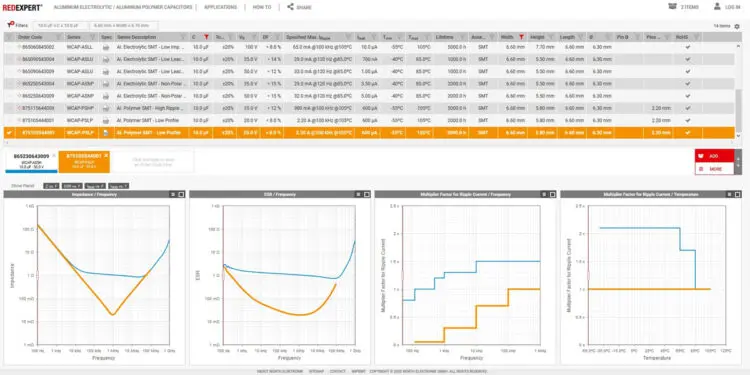REDEXPERT, the online platform for the simulation and selection of electronic components on the basis of real measurements, now has a considerably expanded presence. Würth Elektronik has heeded its customers’ suggestions from the practical area and has installed a feature that enables the direct comparison of aluminum-electrolyte and aluminum-polymer capacitors. The calculation of the ripple current has also been improved.
The RedExpert online platform has now been modified to combine aluminum-electrolytic and aluminum-polymer capacitors in one single module, thus enabling users to directly compare the stored data of the different technologies. Polymer capacitors, for example, have the advantage of a higher temperature tolerance, but also the drawback of a greater leakage current and a limited voltage range. The compromises that have to be borne in mind when selecting components can now be very transparently weighed up against each other on the RedExpert platform.
The display of the ripple current has also been improved. The new diagrams and slider bars enable users to set the power point (frequency and temperature) easily, immediately showing the new maximum ripple current. Due to the differing specifications, the multipliers of aluminum-electrolytic capacitors in most cases result in an increase in the ripple current, while those of polymer capacitors reduce the ripple current. RedExpert now gives developers the opportunity to draw comparisons between the two types of capacitors that would otherwise have to be calculated in a laborious and time-consuming way, based on the respective data-sheet specifications.































